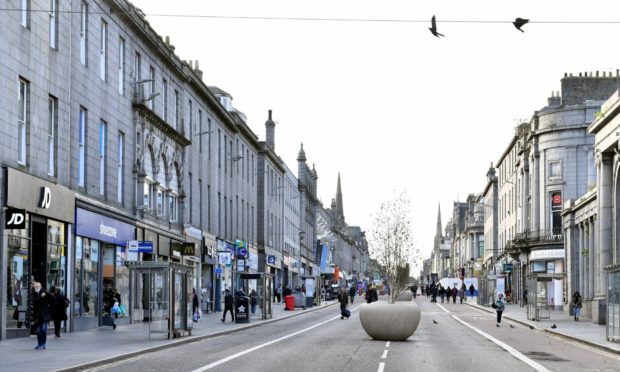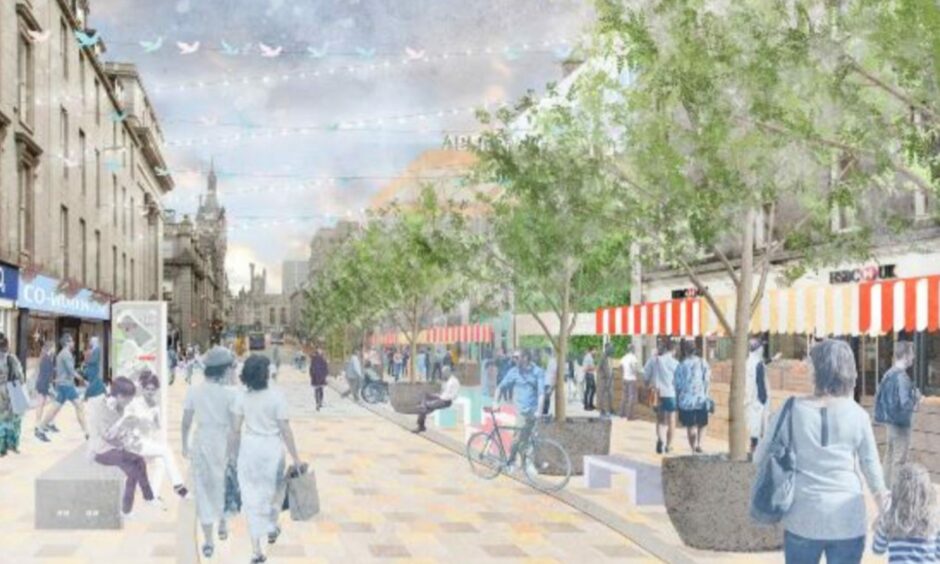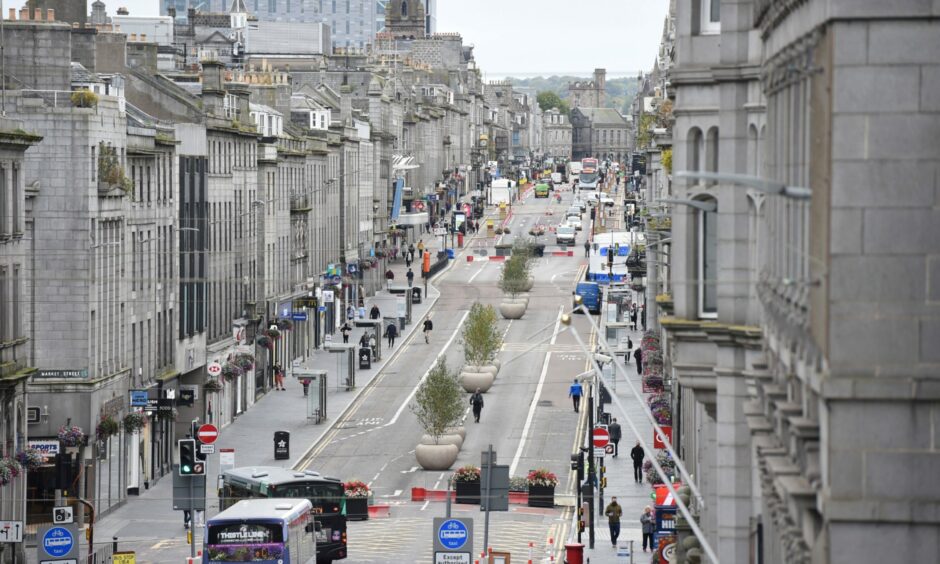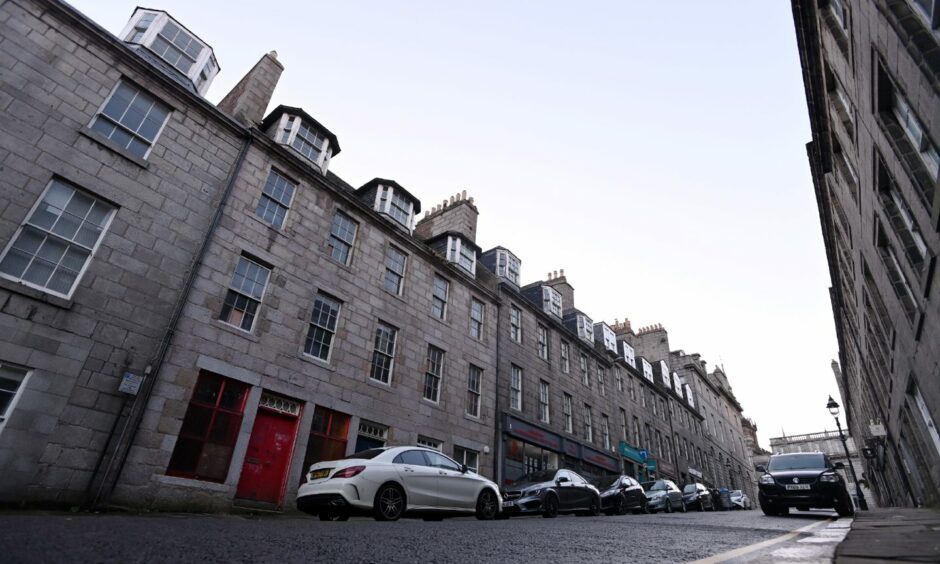Aberdeen’s beleaguered high street might soon be on the mend – as authorities consider what is needed to bring its tired looking buildings back to former splendour.
While work is in the early stages, already council bosses are showing their teeth – raising the possibility of using compulsory purchase orders to secure the city’s granite heritage.
At a crunch meeting this week, councillors could set in motion decades-defining planning to reimagine Union Street, the city centre and the beach.
Among the many projects being considered is to calculate a starting point in the restoration – a visual survey of the condition of buildings along the Granite Mile.
This summer, thousands made their views known on the state of Aberdeen – and established improving Union Street as a top priority in the recovery from Covid.
In reaction, plans have emerged for a revamped beachfront with a new football stadium and significant change in the city centre – as well as the exit strategy from the physical distancing and freedom afforded to the outdoor hospitality trade.
Initial work to survey the condition of the main thoroughfare’s buildings, as well as those in the Castlegate, was taken up last month.
But now, top officials are seeking councillor approval to carry out a full examination of the hundreds of buildings in Union Street – tied into a £150 million refresh of the city centre masterplan.
If backed, building surveyors would compile a report recommending improvements, including how work might be completed, hurdles in the way and – all importantly – the cost of the project.
Earlier this month, councillors agreed to fund a deep clean of Union Street – which has more than 30 empty retail units – using £100,000 from the Common Good Fund.
But this cash is to be used to have pavements washed, graffiti and posters removed and other general maintenance.
Costly compulsory purchase could be used to protect Union Street buildings – but consensus preferred
This latest survey to calculate how to improve tenements, shop fronts, hospitality premises and offices – and the price tag associated with that – would be a first step towards convincing their owners to have it done.
But the project would not have to rely solely on the goodwill of property owners – many of whom investors from outside of the city – with Town House chiefs quick to outline enforcement options, including issuing improvement notices or even seeking compulsory purchase orders.
In a far-reaching report prepared for the city growth committee, resources convener Steve Whyte said it would be “prudent” to commission the survey now – as councillors are asked to “prioritise” detailed design work for a pedestrianised Union Street.
He said: “There is an extensive planning history in relation to civic interest in protection of amenity and character of Union Street and more generally in recognition of its importance in terms of both townscape and planning history.
“As shown by the recent city centre masterplan consultation, despite policy and guidance there is ongoing public and civic concern regarding the function, vibrancy, character, and amenity of Union Street.”
Planning law enables local authorities to issue improvement or repair notices to property owners, though initially council staff would seek to work by consensus.
Early work under the review outlined the steps officials take to reach owners of vacant, underused and defective buildings – to engage them in the process of having the buildings back in use or, at least, improved.
There is already funding through the likes of the Union Street Conservation Area Regeneration Scheme to help with the cost of upkeep of listed buildings on the Granite Mile.
However, Mr Whyte added: “This process can take some time depending on the circumstances of the case and the willingness of the building owners to engage, however has recently yielded positive outcomes.
“The planning service has to carefully consider the time spent in pursuing a positive outcome, mindful that where there is an unwilling owner, the ultimate resolution may be the council taking direct action or pursuing a compulsory purchase order.
“Such options may be quicker, however they are considerably more costly and resource hungry and may leave the council open to risk.”
Council already flexing its muscles in fight to protect granite heritage
Only last month, the council issued an urgent work notice to the owners of Provost Young’s House, at 28-32 Marischal Street, due to “significant risk of building fabric decay”, blamed on lack of maintenance and prolonged vacancy.
Placed on the Buildings At Risk Register in March 2019, the tenement, in what is thought to be Aberdeen’s first street paved with square granite sets, was first flagged as a worry by council planners in 2017.
But the extensive growth of weeds in its guttering and missing slates noted in the 18th Century Marischal Street is a common sight in the historic centre of Aberdeen, along Union Street and beyond.
It is hoped the initial review would be completed next month, with recommendations made to councillors in November.



